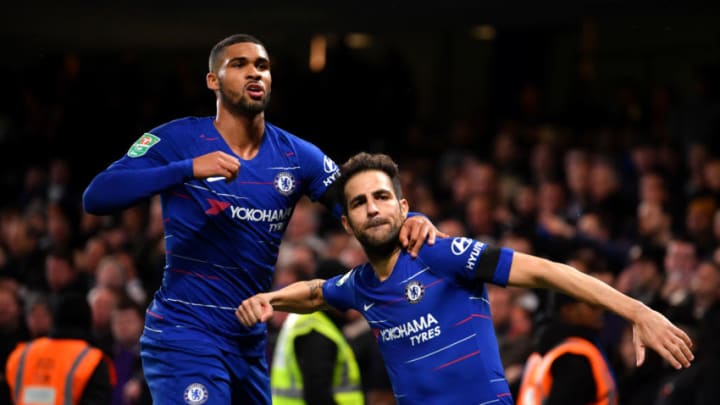Chelsea have one of the oldest average ages of recruitment among the “big five” leagues in Europe. They should be concerned by the company they keep.
This week’s report from CIES Football Observatory bolsters an argument we made in early March: successful teams integrate young players into their sides, and Chelsea are not one of those teams. As of two months ago, the amount of minutes Maurizio Sarri gave to Chelsea’s players under age 20 – that is, Callum Hudson-Odoi, since Ethan Ampadu’s playing time is now statistically insignificant – was more in line with a perennial midtable or bottom-half team than a top-six team.
CIES Football Observatory analyzed the average age at which players signed with the clubs they played for this season. Chelsea’s average – 25.81 years – was the 20th oldest of the “big five” European leagues.
Of the teams with an older average age of signing, only a handful have been in European competition over the last few seasons: Olympique Marseilles, Villarreal, Sevilla and Athletic Club Bilbao. A few others – notably Burnley and West Ham – did not make it out of the qualifying rounds.
Meanwhile, over half of the 20 teams with the youngest age at recruitment played in the Champions League or Europa League. These teams include RB Leipzig, Real Madrid, Bayern Munich, Manchester United, Borussia Dortmund, Borussia Monchengladbach, Manchester City, Hoffenheim and Tottenham. Expanding beyond the “big five” leagues to all of Europe brings in CSKA Moscow, PSV Eindhoven, Celtic, Shakhtar Dontesk and, of course, everyone’s Champions League darling this season, Ajax.
As happens with a lot of these topics, chickens and eggs abound. Are these teams successful because they sign and play young players, or do they have the “luxury” of signing and playing young players because of their success?
Clubs need a high level of confidence in themselves to sign young players. They need a competent scouting team who can identify the right players to buy, communicate effectively with the technical director and have a coaching staff who will make use of those players in his squad. Signing a player carries a bit of risk and requires patience for that player to develop into the player the scouting team recognized in his potential. The club has to be bullish about their own future, as well as the player’s, to repose this faith in scouting and coaching staffs. They have to believe that this player will help fulfill their vision for the club, which of course means they must first have a long-term vision for the club.
Clubs buy older players for two main reasons. The first is buying a player near his prime to provide an immediate injection of quality into the side, perhaps to power a European or domestic campaign. The second is filling an unexpected, perhaps short-term need.
Chelsea’s transfers often fall into the second category, particularly over the last few years. The Blues have bought several players without any discernible purpose, who end up either on the bench or on loan. Perhaps the last true mid-career stars they bought were Cesc Fabregas and Diego Costa in 2014 and Pedro in 2015. The other players 25 years old or older – those who are raising the average age of recruitment – were either stop-gaps who saw little playing time or highly specific, short-term players, like Jorginho is proving to be.
In matters of youth recruitment and usage, Chelsea are playing the part of midtable teams in England and Europe while coasting on the inertia of the previous 15 years. Already Chelsea are looking like a Europa League regular who occasionally dabbles in the Champions League, after a decade plus of having a reserved seat at the Champions League table.
CIES’s analysis indicates Chelsea are relying more on experienced, often expensive, short-term stop-gaps rather than buying young players to build for the future. This does not mean Chelsea’s youth recruitment and playing habits are driving their fluctuations in form. But the patterns that emerge from this analysis are clearer than any strategy that may be driving the club’s transfer policies.
Analyses like this reveal leading indicators. Chelsea are still getting the results akin to the clubs in one column while acting like the clubs in the other.
But like a team out-performing its xG, before long results will catch up with behavior.
